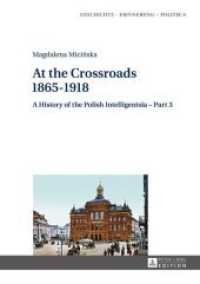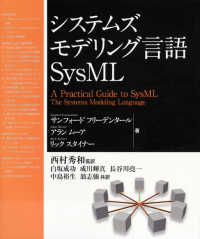Full Description
This volume argues for an innovative interdisciplinary approach to the analysis and translation of literary style, based on a mutually supportive combination of traditional close reading and 'distant' reading, involving corpus-linguistic analysis and text-visualisation. The book contextualizes this approach within the broader story of the development of computer-assisted translation -- including machine translation and the use of CAT tools -- and elucidates the ways in which the approach can lead to better informed translations than those based on close reading alone. This study represents the first systematic attempt to use corpus linguistics and text-visualisation in the process of translating individual literary texts, as opposed to comparing and analysing already published originals and their translations. Using the case study of his translation into English of Uruguayan author Mario Benedetti's 1965 novel Gracías por el Fuego, Youdale showcases how a close and distant reading approach (CDR) enhances the translator's ability to detect and measure a variety of stylistic features, ranging from sentence length and structure to lexical richness and repetition, both in the source text and in their own draft translation, thus assisting them with the task of revision. The book reflects on the benefits and limitations of a CDR approach, its scalability and broader applicability in translation studies and related disciplines, making this key reading for translators, postgraduate students and scholars in the fields of literary translation, corpus linguistics, corpus stylistics and narratology.
Contents
Introduction; Chapter 1. Using computers in literary translation; Chapter 2. Analysing the source text: structure and style; Chapter 3. CDR, translation theory and the attempt to create an 'English Benedetti'; Chapter 4. Applying the methodology (Part 1): the translation of culture; Chapter 5. Applying the methodology (Part 2): the translation of punctuation; Chapter 6. Applying the methodology (Part 3): comparing source text and draft translation; Chapter 7. Applying the methodology (Part 4): the auto-analysis of translator style; Chapter 8. Conclusions: Assessing the potential of the methodology; References; Appendix 1. Research data; Appendix 2. Translations used for chapter 7; Index







